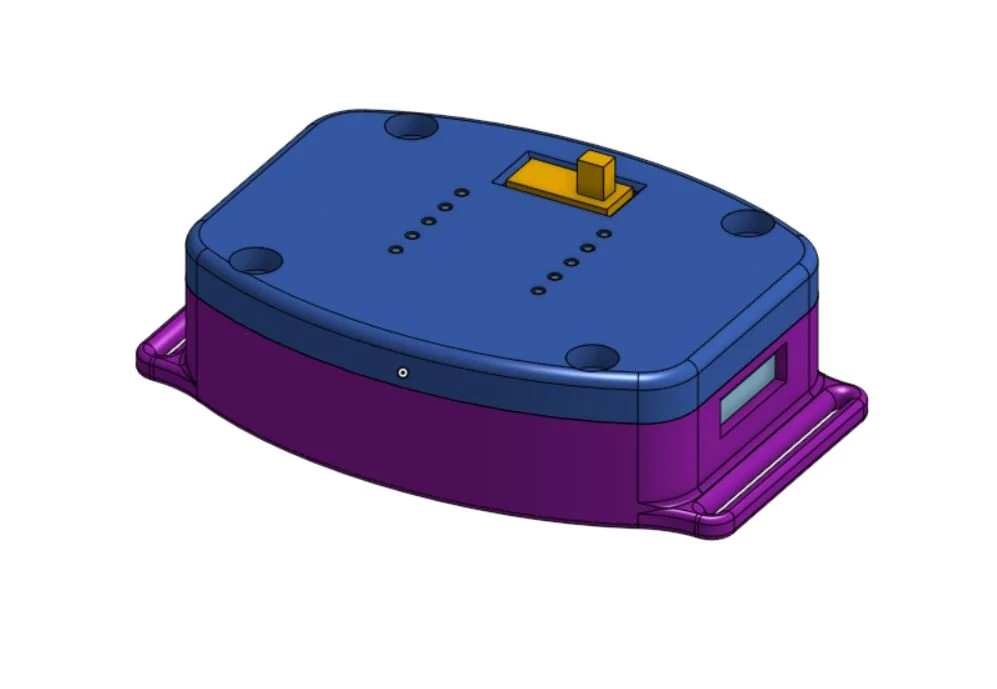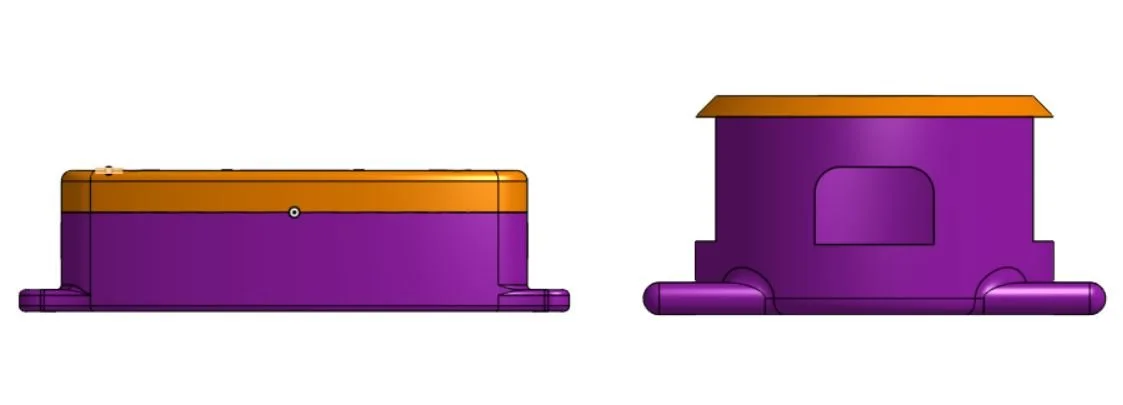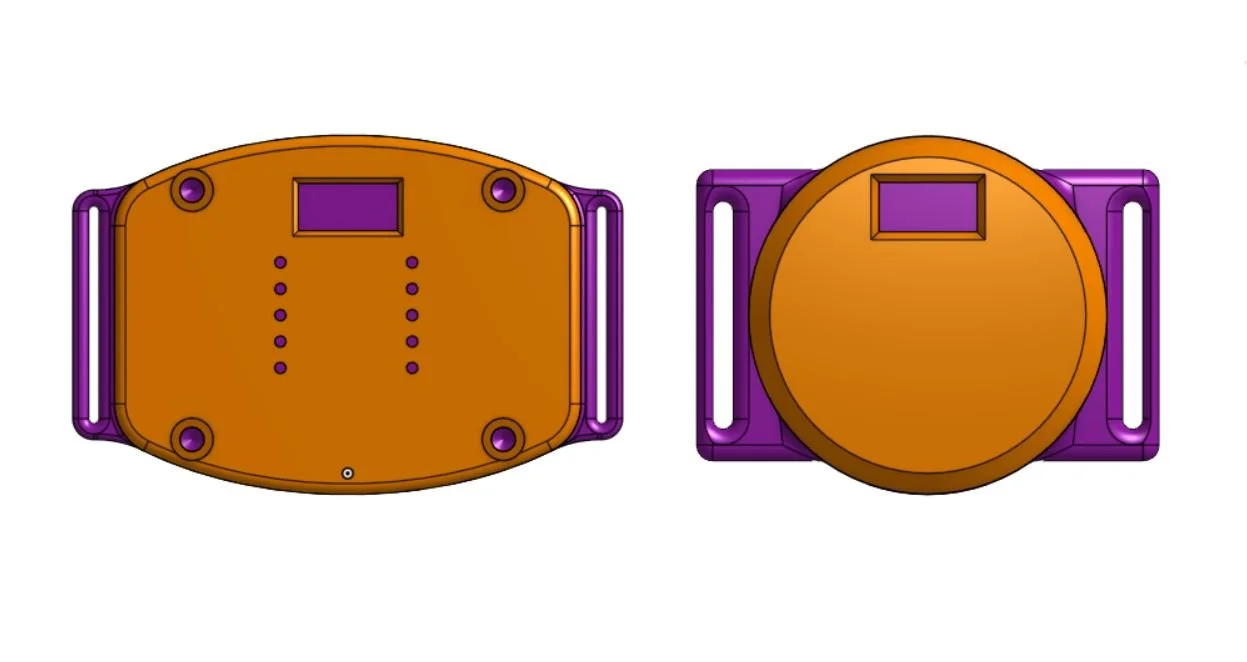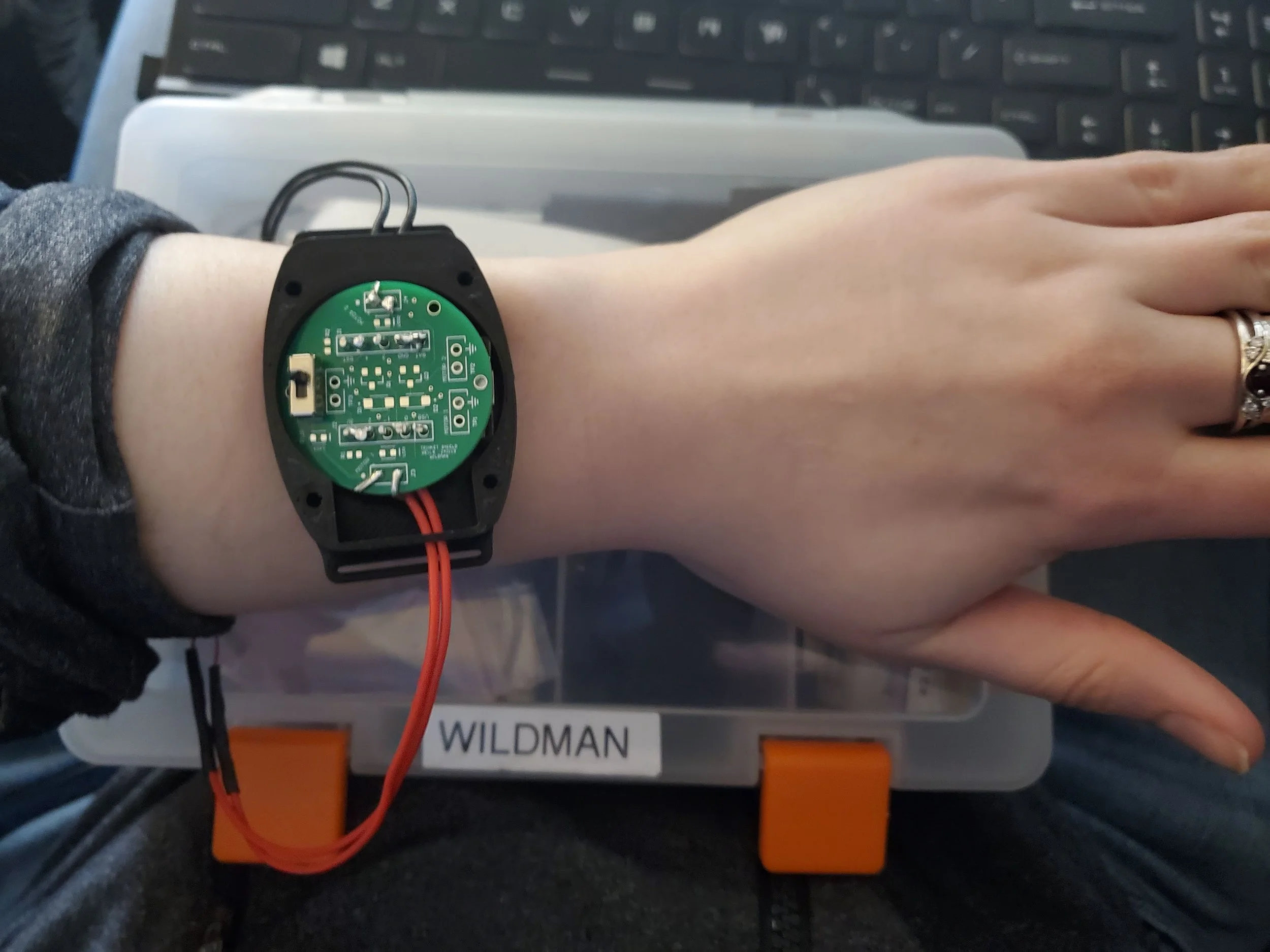W-6
Progress
Case iteration 2!
The biggest issue with the first case was height, standing at 21.27mm tall. For comparison, my Garmin Venu 2S is 12.1mm tall. Nearly twice the height of a smartwatch isn’t practical or acceptable. The new design mostly resolves the issue of height, standing at 13.51mm.
The new issue is that the physical footprint of iteration 2 is larger, spanning 52.93mm (which is slightly wider than my actual wrist). Iteration 1 spanned 44.48mm. Both of these measurements are from the ends of the tabs for attaching the strap.
I have tiny wrists, so on me it still looks too large.
However, when tried by Brandon Noirot (mentor) it actually looked like a reasonable scale. As a bonus, we compared it to his own Garmin watch, which I do not know the model of but it is much larger than my own. With that in mind, this case fits reasonably on larger wrists.
The difference between the two cases is that the battery has been relocated from the top or bottom to be next to the PCB assembly. This one was also made with the assumption that both motors would be located in the strap and not in the main assembly. The first iteration assumed that one motor would sit on the bottom of the case.
One problem that this design has is it doesn’t account for how to remove the battery to replace or charge it. It was also made without taking the battery connector into consideration. So it may be necessary to add a few millimeters back to the height once that is factored in.
Goals accomplished from last week:
Decide on motor placement (tentatively)
Refined case, shrank size vertically
Next week:
User testing 2
Further refine case design, factor in a battery connection
UX Testing 2
The project was not ready for a second round of user testing yet, so that has not happened. That will probably happen sometime in the next week now that there is a new case to test.
Mentor Feedback
Kelli Noirot
Second case iteration looks much better than the first.
More practical this time.
Like the soft football shape
Ideally, don’t have the switch sticking straight up because it will catch on things like sleeves and potentially be easy to break.
Consider relocating the switch to the side of the case and/or recessing the switch a bit.
Alternatively, consider a button instead of a switch.
The strap attachment points look too thin and potentially weak.
Consider designing the attachment points similarly to Garmin for aesthetics
Consider including an LED that’s visible to the user to indicate that it’s on.
Consider asking users if they would prefer to wear it horizontally or vertically on the wrist.
Brandon Noirot
Overall Thoughts
It’s really cool, full stop.
Overall package feels manageable for my wrist.
Would recommend gathering data on wrist sizes so that the placement of the sensory motors are roughly at 9 and 3 for the majority of people (find average and standard deviation).
Final stage of your plan is to produce a PCBA revision. Can you shrink the PCBA and the overall package to a satisfactory size of your choosing?
How will you feed the wires for the motors through the housing to the motors on the wrist-straps?
How will you secure the motors on the wrist-straps?
Technical
Learn and understand the engineering process: https://en.wikipedia.org/wiki/V-model
Learn to use the tools at your disposal as an engineer. Not all tools exist in a toolbox.
There are pros and cons to everything. Understand how to weigh them such that you can make design decisions to make the best product you can.






